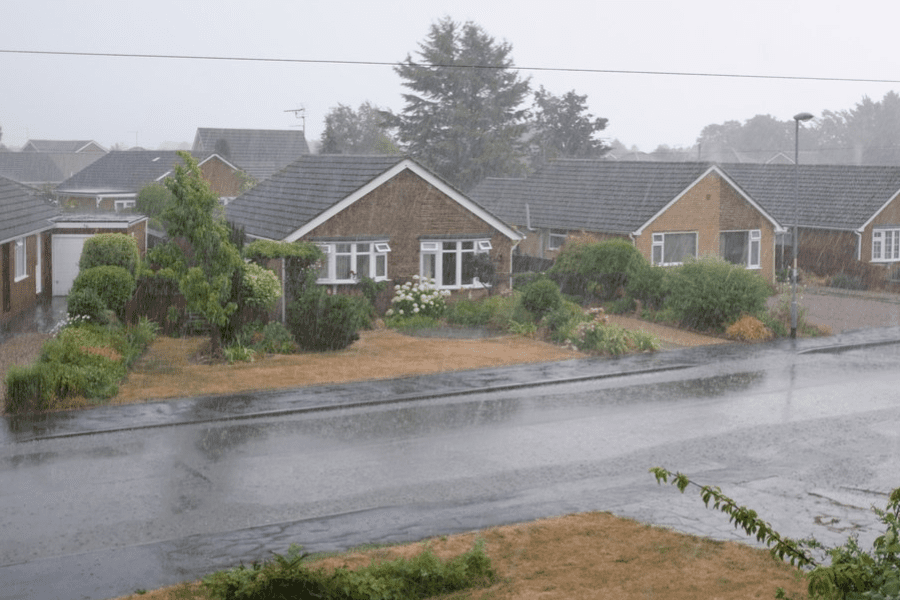Aug 9, 2024
Can Energy-Efficient Buildings Outperform in Extreme Weather Conditions?
Extreme weather events are getting worse and more frequent. Good news is that energy-efficient buildings can outperform traditional materials during extreme weather events and improve performance.
By: Evelyn Long

Extreme weather events are getting worse and more frequent. Building safe residential structures to protect property and life is becoming more of a concern in the construction industry. Choosing energy-efficient materials that lessen the environmental impact of construction while also withstanding storms may be the answer.
Climate Change and Severe Weather
Many experts believe climate change is leading to more frequent and stronger weather events across the United States. In recent years, areas with historically milder temperatures have experienced floods, droughts, high heat and tornadoes.
According to the National Oceanic and Atmospheric Administration, the U.S. suffered the fifth warmest year on record in 2023 and a massive number of disasters causing billions of dollars in damage. The cost for 28 floods, tornadoes, wildfires, droughts and other severe weather events totaled $92.9 billion.
The construction industry is sometimes criticized for its environmental impacts, but many professionals seek ways to create a greener future. It’s only natural to consider environmental impact while creating stronger structures that withstand extreme weather conditions.
Energy-Efficient and Storm-Resistant Structures
How can builders define energy efficiency? One way is by seeking LEED certification. Buildings that meet LEED standards have 50% fewer greenhouse gas emissions due to lower water consumption. LEED is frequently used in the commercial building industry but is also a good rule for residential builds.
Builders are on the front lines and can make a difference in safety and reduce environmental impact. Energy-efficient buildings can outperform traditional materials during extreme weather events and improve performance. Because green materials include reinforced concrete, engineered wood, and steel, structures are typically stronger and can withstand hurricanes, earthquakes, tornadoes, and other natural disasters.
Insulation
Insulation helps houses use less energy and shores up structural integrity. Using high-quality materials keeps indoor temperatures steadier. The home will retain heating and cooling, reducing the load on local utilities and reducing the user’s carbon footprint. During extreme temperature fluctuations, the building stays colder for longer periods without the help of an HVAC unit.
Prefabricated Materials
Builders can turn to modular walls and roofs to minimize the impact of new builds on the environment.
Prefabricated builds allow construction professionals to include structural insulated panels (SIPs). SIPs offer a foam core of insulation between facings, such as oriented strand board (OSB). SIPs are also created in a factory and can fit almost any style or size of home and offer an inexpensive, energy-efficient option for homebuyers.
Prefabricated structures offer more consistency. Builders can use renewable materials and lumber from sources committed to reforestation. They should use the opportunity to buy more sustainable materials to enhance overall quality.
Prefabricated structures reduce landfill waste by 15.38% over conventional builds. Manufacturers have also perfected putting together walls and roofs indoors, saving time and waste by working whether it rains or storms.
Energy-Efficient Windows
Adding energy-efficient windows can ramp up the structure’s durability. Some windows withstand hurricanes and severe storms. Builders can consider reinforced framing and roofing that adds structural enhancements.
The goal is to add windows that keep cold and warm air inside the home while preventing outdoor elements from leaking inside. Better-quality windows will reduce energy consumption and the homeowner’s carbon footprint.
Even simple changes, such as better weatherstripping, can prevent air leaks and keep heated and cooled air inside the home, further reducing energy consumption. The type you choose can make a difference in how effective the barrier is. For example, magnetic stripping works like a refrigerator magnet and is extremely effective at sealing air leaks. However, adding vinyl strip gaskets only offers low to moderate effectiveness.
Multiple Benefits of Energy-Efficient Buildings
Building green homes takes higher-quality materials and careful planning. While the finished product could cost slightly more than a traditional build, it will also withstand extreme weather conditions better.
The planning involved in building a green home may create higher costs initially. However, using sustainable resources reduces the homeowner’s carbon footprint and saves money on energy consumption through better insulation and less air leakage. Even the site chosen for a new build can have an environmental impact. The house will better withstand extreme weather conditions by maintaining a more consistent temperature.
Construction professionals who wish to reduce the impact on the climate can promote the advantages to their potential clients and show the benefits of an eco-conscious build in the long term.






